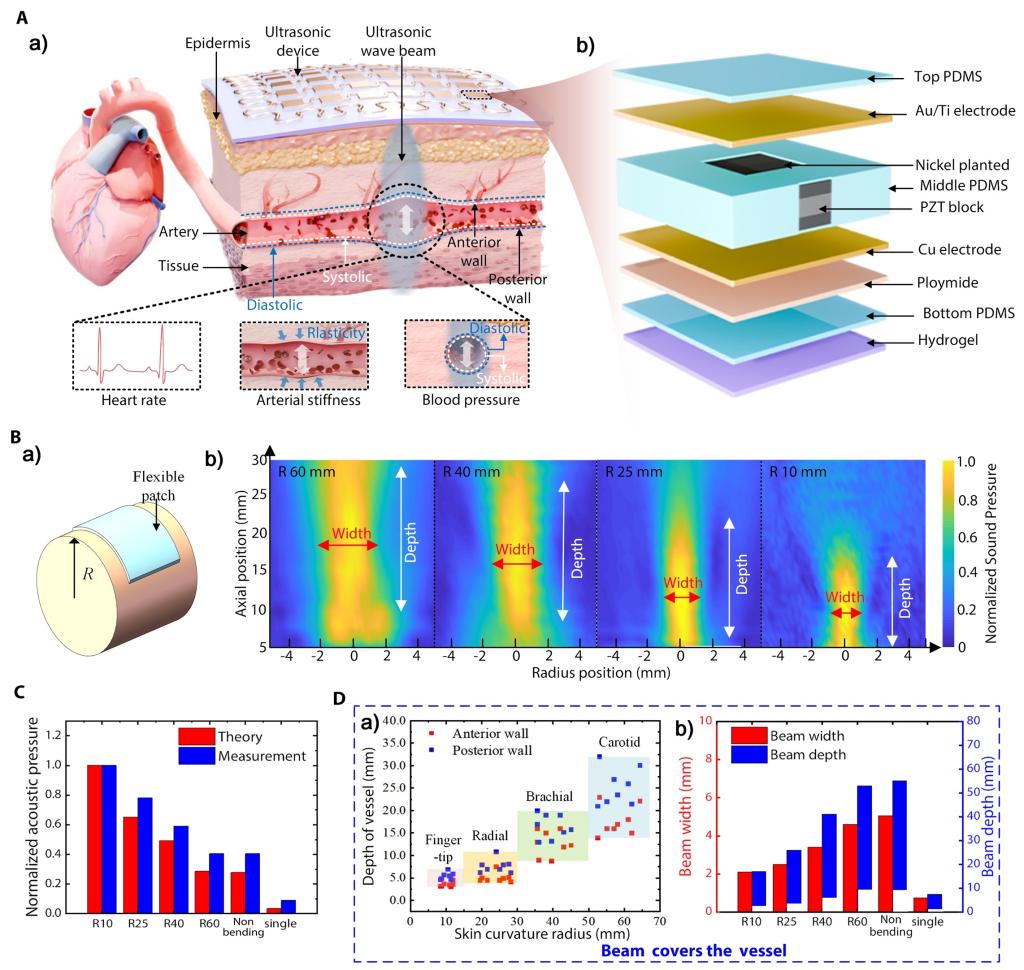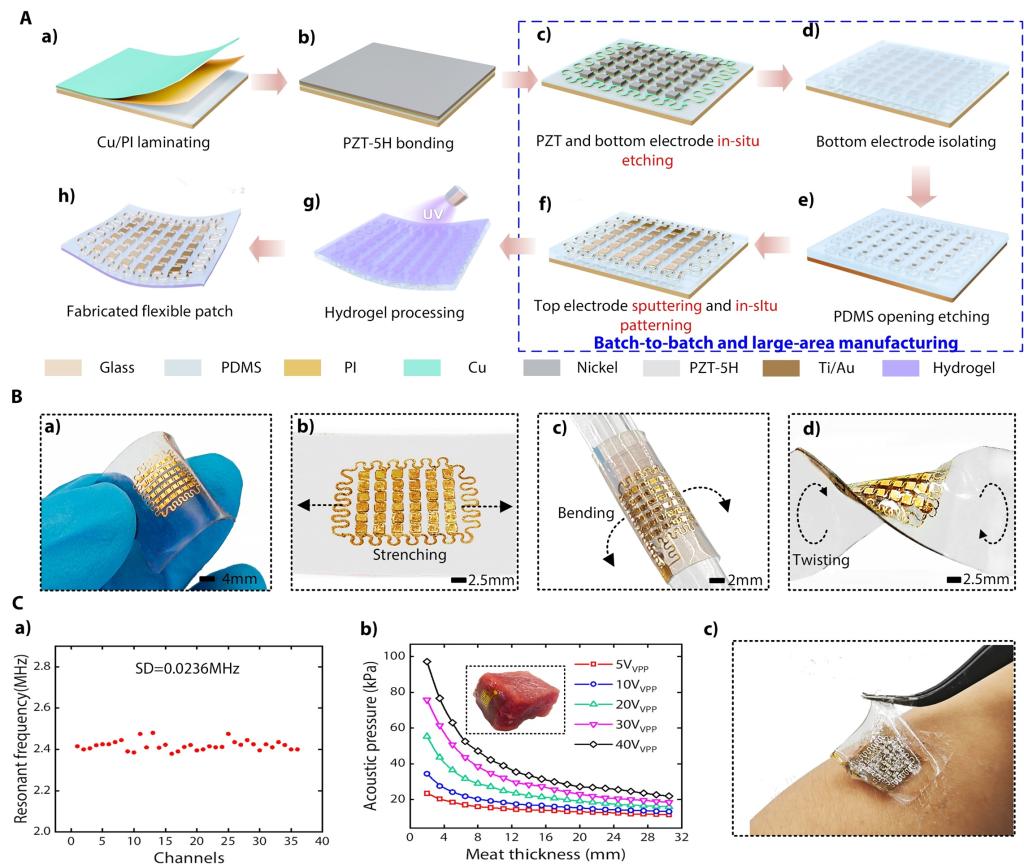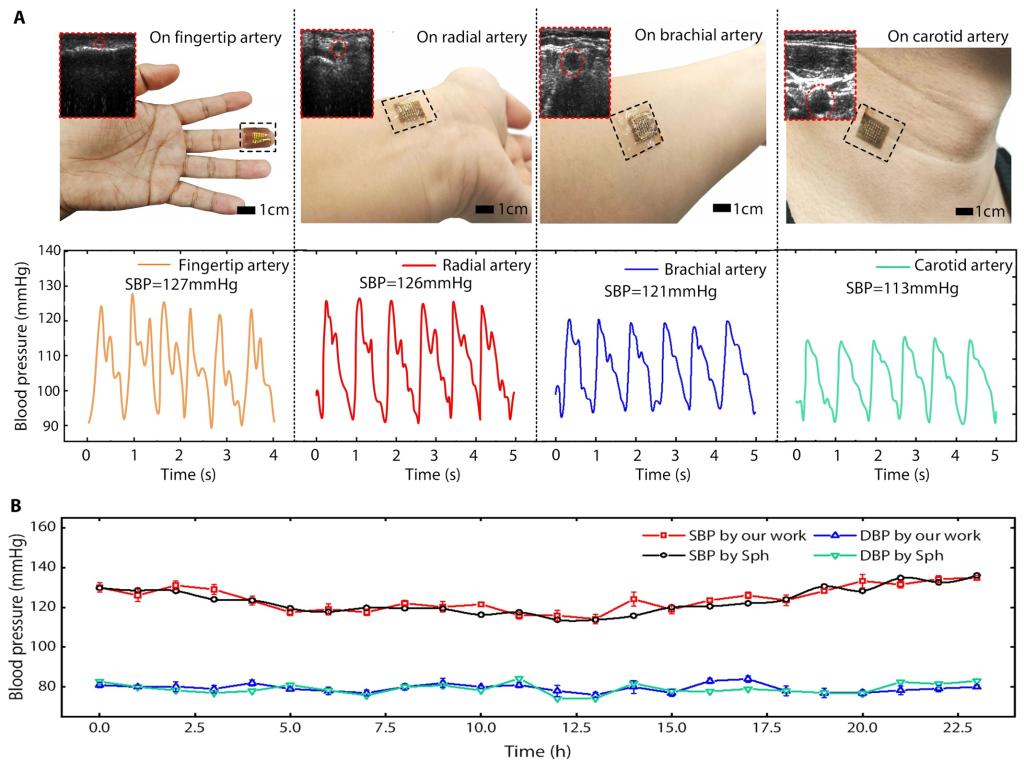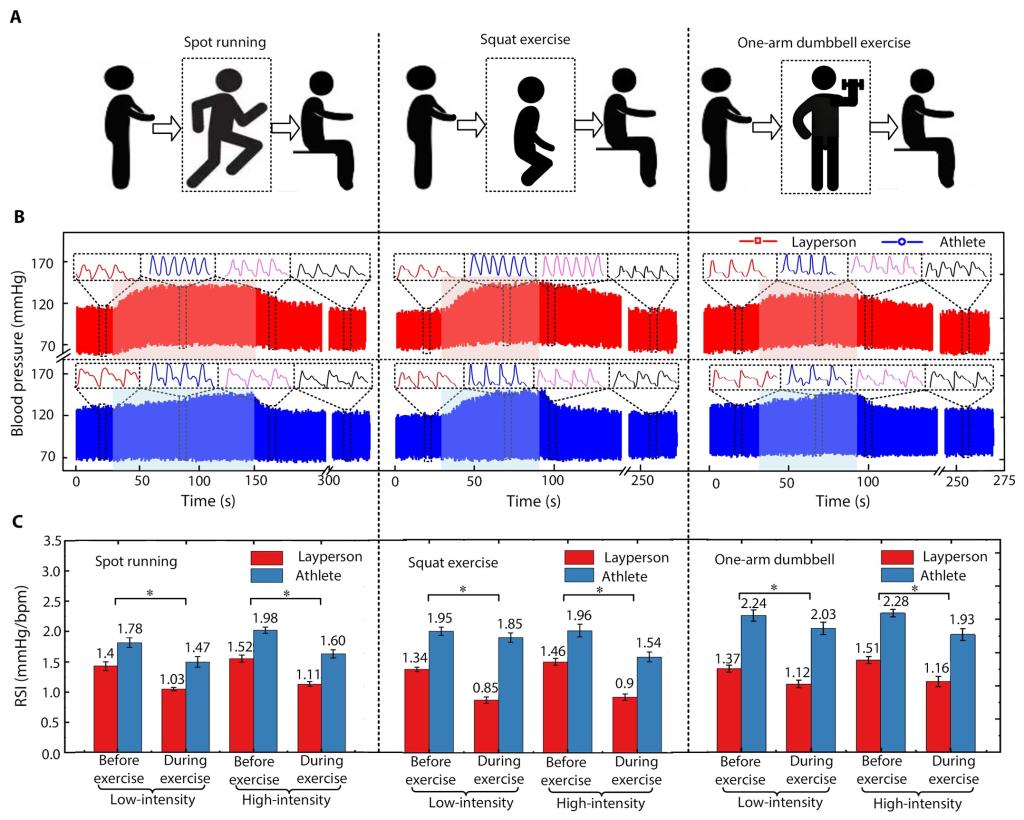
Cardiovascular diseases (CVDs) have become the leading cause of human death over the world in recent years because of their high incidence rate, disability, and mortality.
Existing detection technologies such as electrocardiography and magnetic resonance imaging are constrained by limitations such as large equipment size, heavy reliance on specialized expertise, and poor portability, making it difficult to meet the needs of early warning and timely diagnosis.
A research team led by Academician Jiang Zhuangde of the Chinese Academy of Engineering and professor at the School of Mechanical Engineering, Xi’an Jiaotong University (XJTU), and Professor Lyu Yi of the First Affiliated Hospital (FAH) of XJTU, co-developed a skin-adaptive focused flexible ultrasonic transducers with microelectromechanical systems (MEMS)-compatible processes. The device conformally adhered to the skin surface and enables noninvasive, real-time, continuous monitoring of multiple hemodynamic parameters, such as blood pressure (BP) waveform, heart rate, and vascular stiffness. The study introduced the skin-adaptive focusing ultrasound (SAFU) method. By leveraging in-phase excitation of full-array elements together with the natural curvature of the skin, the method generated a “football-shaped” acoustic beam that dynamically adjusted to skin curvature and covered typical arterial regions such as digital arteries and the radial artery, enabling high-precision measurement of hemodynamic parameters. The approach greatly simplified the structural and circuit complexity of phased-array technology, enhanced acoustic pressure by 10.8 times, and improved the signal-to-noise ratio by 19.5 dB, offering an ideal pathway for physiological parameter monitoring applications based on ultrasound time-of-flight measurement.

To address the challenges of poor consistency and difficulty in mass production of flexible ultrasound devices, the team developed a MEMS-compatible fabrication technology. By employing processes such as magnetron sputtering for electrode deposition and femtosecond laser etching for piezoelectric units, manual operation was reduced and device consistency improved. In addition, a UV light–cured hydrogel layer was introduced to enhance acoustic impedance matching and adhesion. The fabricated 6×6 array has a center frequency of 2.4 MHz, with a resonance frequency standard deviation of less than 1.0%, penetration depth exceeding 30 mm, and is suitable for cost-effective mass production.

In terms of applications, the array enables real-time, continuous BP monitoring at multiple sites. In 24-hour monitoring, the systolic and diastolic pressure errors were 1.8 mmHg and 1.1 mmHg, respectively, across a measurement range of 10-350 mmHg, achieving performance comparable to commercial sphygmomanometers. It can also simultaneously monitor BP and heart rate during physical activity (heart rate error ±2 bpm), differentiate cardiac function using the reverse shock index, and diagnose latent cardiovascular disease. Furthermore, it measures vascular stiffness with an error margin of less than 25%, validated in clinical settings.


This achievement, published under the title “Skin-Adaptive-Focused Flexible Micromachined Ultrasound Transducers for Wearable Cardiovascular Health Monitoring” in Science Advances, a sub-journal of Science, was co-authored by XJTU’s PhD candidate Yuan Jiawei and Associate Professor Li Zhikang as first authors. Supported by the National Natural Science Foundation of China and other projects, the innovation provides a new pathway for daily monitoring and early warning of CVDs.